Master League mode still defines the PES franchise. For those of you not familiar with Master League, in a nutshell it’s PES’ version of a franchise mode. Players can choose to start up with real clubs or the default fake Master League players. It doesn’t matter which option you choose because either way you’ll eventually be faced with one of the most robust and detailed player progression systems in all of the sports video game genre.
In order to properly critique the training system in PES, it’s important to understand how it works. In this two-part series, we’ll first get a grip on what’s involved in training. In part two, we’ll break down how effective the PES training system is across a few categories, but for now let’s jump into everything training-related.
First and foremost, you must navigate to the Master League home screen and navigate to Team Management. Here you will see three different options:
- Training – Train senior/first team players daily across a variety of abilities with the opportunity to modify their abilities and/or learn new skills/playing styles.
- Skill Training – Senior players who possess certain abilities can take part in Skill Training where they can learn certain “skills” often learned over a certain period of time (in days). You can only train one player at a time while regular “training” can be applied to your entire team.
- Youth Training – The same concept as regular training but for your youth team.
Before we dive too deep, it’s important to understand the concepts of how players are rated. These concepts will appear frequently in this series, so it’s vital we understand them as they can help or hurt you during the course of your Master League.
Abilities – These are your traditional values such as Finishing, Speed, etc. on a 40-99 scale. Abilities are broken down into three color-coded categories:
- Red – Abilities where your player is weak. Typically <75
- Yellow – Abilities where your player is average. Typically 75-90
- Green – Abilities where your player is excellent. Typically 90-100
Playing Styles – Individual behavioral effects that influence a player’s movement. They can be changed during training in Master League in order to change how your player grows/improves in specific abilities.
Form/Condition Arrows – Determined by the player’s form ability, these arrows indicate what kind of state the player is in:
Typically, you would want to avoid playing players with a terrible condition form. Only the best players (Messi, Ronaldo, etc.) should be considered for selection with this condition.
Team Roles – The role a player has within his team (duh!). A player with a team role can positively impact the team and his teammates, as well as his own play in various ways. A player’s Team Role will determine their Personality and their Impact on the team.
Within each Role are levels (1-3). Levels help to increase the effect. The higher the level, the more the boost to increase:
- Level 1 – small boost
- Level 2 – medium boost
- Level 3 – high boost.
Team Roles also have star ratings with more stars being better.
Team Role Effects – The effects of players with specific team roles on your teammates. This can influence abilities like stamina or awareness (offensive/defensive)
Player Personalities – Each player has a Personality, which is expressed by a trait from the following four categories, each opposite characteristics:
- Team Play/Lone Wolf
- Passion/Composure
- Technique/Physical
- Instinct/Insight
Impact – This is defined as their overall presence within the team. The higher the player’s impact, the stronger the Team Role they develop. A player’s impact can improve through better match performances and an increase in stats.
Player Training
Whew, that’s a lot to digest but as you go through this “mini-guide” hopefully you’ll have a better understanding as it really ties together once you play with it a little bit during your Master League.
Within Player Training there are two training settings given to you:
- Training Settings/Roles
- Focused Training
Training Settings/Roles are synonymous with Playing Styles. For example, if you would like to train your attacking midfielder to be a “creative playmaker” (a player who takes advantage of gaps in the defense to initiate attacks and assists in shots on goal) you can choose to do so. This will have a direct affect on what abilities he will focus on in hopes of improving them.
These settings/roles are position dependent, meaning that you cannot in theory train a goalkeeper into a creative playmaker. However, you can learn new positions by playing a left winger on the right wing. After a period of time, the player will adjust to that new position and new training settings/roles can open up.
A lot of default training settings are set to balanced:
As you can see, balanced incrementally improves every ability/attribute in one area. While in theory this could increase your overall rating, it will send training focus points to areas you might not necessarily need, like goalkeeping abilities for an outfield player. Personally, I’d recommend that you never use the “balanced” option for this reason.
Lastly, there is Focused Training:
Focused Training lets you allocate up to five focus points in areas such as shooting, passing and dribbling. Focused Training is particularly helpful when you have a player who is really poor in one area, and you want to really improve it even if it’s at the expense of other attributes/abilities.
When it comes to setting their training settings, it’s important to keep in mind what role you envision the player in what kind of player you want them to be. Tailoring them towards your game plan, formation, etc. is really the key to training and getting the most out of your players. Players will automatically improve (or decline if they’re older) over time with minutes and good performances, so the right training setting could really improve your player(s) quickly. Lastly, sometimes players will make “breakthroughs” that are indicated by a blinking upward blue arrow. This will often be sent in the messages as well just in case you missed it. Playing time and good performances (match rating of 6.5 or higher) will lead to more breakthroughs.
So in essence:
Training (Focused/Team Role Based) + Playing Time + Good Match Performances (match ratings) = Increased Player Progression in the form of abilities and/or playing skills
As a result, a defined “Team Role” will develop that can positively impact the team and his teammates by determining their Personality.
Here is how it all plays out using Chelsea’s Olivier Giroud (ST/CF):
As you can see, Giroud is a 34-year-old CF with the “Post Player” playing style. This means he’s a player who becomes the focal point of the attack by holding the ball up in an advanced position.
As a Post Player, Giroud’s abilities are targeted as follows:
A good rule of thumb is to look and see what your player is currently good at. Olivier Giroud is already adept at “heading” so you can either choose to focus your training attention on areas he’s not proficient in (dribbling or speed), or hammer home areas he is already good (heading and physical contact) with the hopes of making them elite. Even if you focus on increasing Giroud’s speed (66), is it really worth focusing your training on speed just to get it from a 66 to a 67?
Also, it’s important to keep in mind the age of the player. Giroud is 33, so he’s at the age where physical traits (speed, acceleration, etc.) are already going to decline.
Lastly, for a player like Giroud let’s look at his Team Role:
Giroud is a “Star Player” on Level 3 with the following Personality traits:
- Lone Wolf
- Composure
- Strength
- Instinct
As you can see, his Impact is about half-filled, and as result of him being a Star Player, you receive the following Basic Effect:
“Added Fan-Favorite Bonus (S)”
“Fan-Favorite” bonuses impact your finances, specifically how much match money you accumulate. Makes sense, right? He’s a star player so if he’s in the lineup and plays well, more fans will show up and more merchandise with him will be sold. This will result in more money in your pocket to use for player transfers or player wages. It’s not a bad bonus but it doesn’t really change your other teammates.
Take, for instance, the General Team Role:
The General Team Role is harder to come by, as indicated by its 3-star rating so the effects are greater. Not only do you get medium (M) boosts for player conditions in key matches (think derby matches), you also get boosted training for players with the same registered position. So if you have a center midfielder (CM) who is a General, other center midfielders on your team will have training benefits. Lastly, if your General is also your team’s captain, you’ll earn a special effect of reduced fatigue for the entire team.
Skill Training
From above, Skill Training is available to senior players who possess certain abilities. These players can take part in Skill Training where they will learn certain skills, often learned over a certain period of time (in days). You can only train one player at a time while regular “training” can be applied to your entire team. Because players are constantly improving over time, new skills will become available to them. Even if/when your players decline over time due to age, they will still maintain their skills.
Each skill comes with a detailed page where the skill is explained in terms of description, how to execute it, how long the training period is (in days), what ability requirements are required, and lastly, which players on your team are eligible for this skill. It’s important to note that some skills such as “heading” do not have special commands to execute. Because you can only train one person on your team at a time, it’s important to choose your skill training wisely. For example, I’m not a player who is adept at all of the skill moves such as the Marseille Turn. I prefer skills like Mid Range Curler that are more practical in execution and more beneficial to the team. A striker or inverted winger — a wide player whose dominant foot is inside, meaning they are more prone to cutting inside and shooting as opposed to staying wide and sending in crosses on their weaker foot — for me will help my team more by cutting inside and shooting than executing the Sombrero flick.
One good thing about skill training is that playing time and match performance do not matter. If your player needs 45 days to acquire the Fighting Spirit skill, it won’t matter if he’s playing or sitting on the bench/in the stands. Once you’ve acquired this skill, you’ll be notified in your Messages. So it’s important that when you’re notified, you set up the next person.
Youth Team Training
Youth team training works the exact same way that regular training works with one key exception: playing time and match performances are not factored into things here. Because your youth team players are not gaining actual experience from matches, you’ll have to focus on what kind of role you think they will eventually land-in and hope that they develop physically over time. I still do not recommend using the balanced training setting, but sometimes if the player is good enough to sign and go out on loan, it might be worth it to do so.
Just as in real life, nothing beats actually playing when it comes to development, but be careful with your loans. The wrong loan could prove detrimental if they don’t actually play (you can check to see if they’re actually playing by going to Database – Team Information – Team – Player Records).
Tying everything together in one screen is the Development Sheet under the sixth tab in player info. This tab focuses on the player’s growth since he joined your squad. As you can see here for Kepa, his Impact has grown nicely while his personality has also rounded into shape. The chart on the right tracks progress over time with age (time) on the X axis and overall player rating on the Y axis. In this simulation, he’s 26 and approaching his 27th birthday. Admittedly, I didn’t focus too much attention on Kepa at the start of my Master League so his actual progress lagged behind his expected progress. Through more playing time (I stopped rotating keepers) and a focused training time that will see him develop a new Team Role, I should exceed his expected progress at age 28.
Player development in PES is as robust a system that you’ll see in console sports video games. With RPG elements sprinkled in, there’s enough to keep the most detail-oriented virtual manager busy. If it’s overwhelming — and it very well may be for certain people — you can always just rely on the tried and true formula of playing time + good match performances to ensure that your players will improve over time.
Be sure to check out part two where I grade out PES’ training system in areas such as realism and depth.



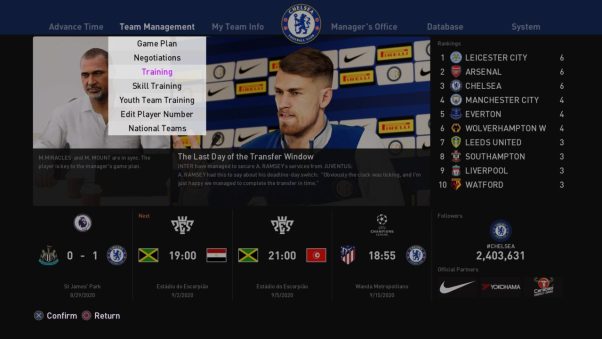
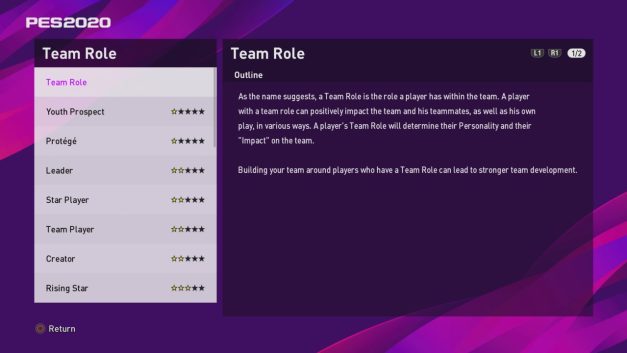
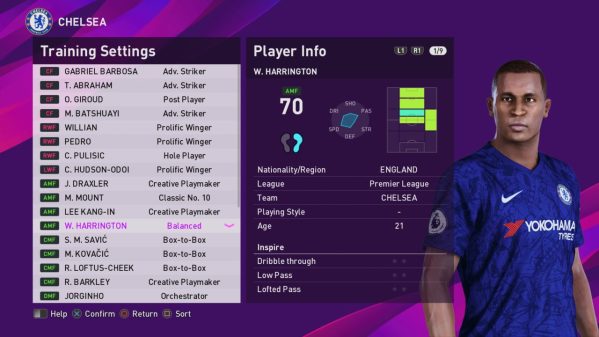
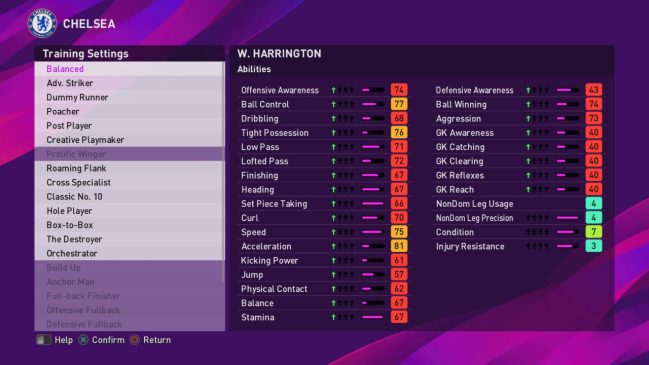
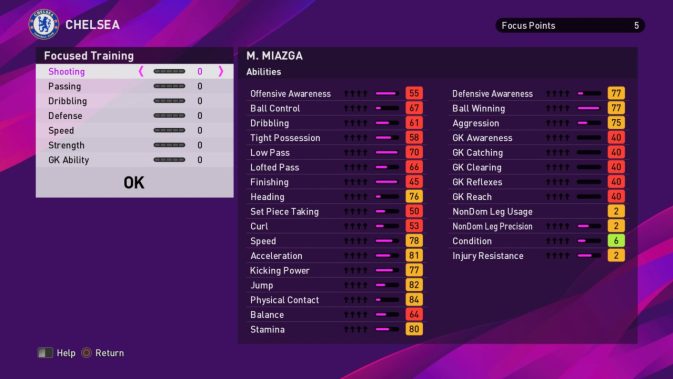
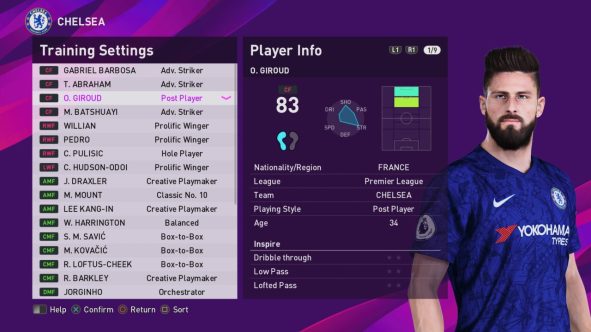
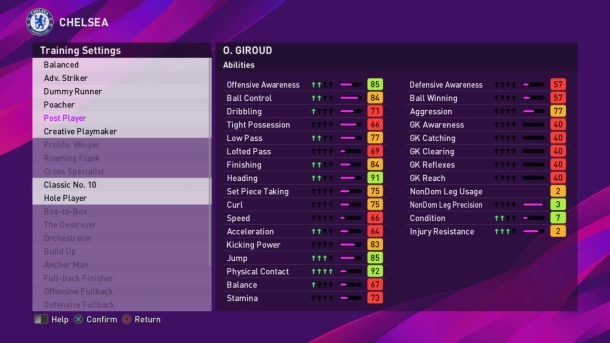
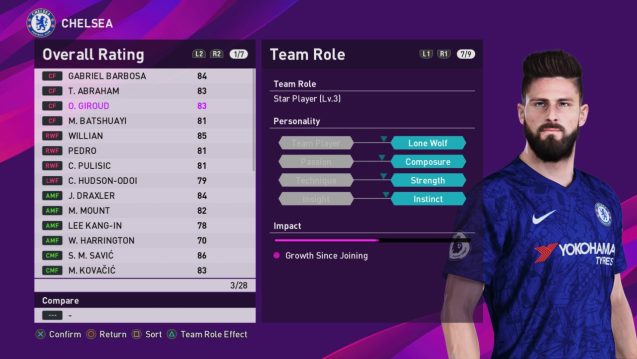
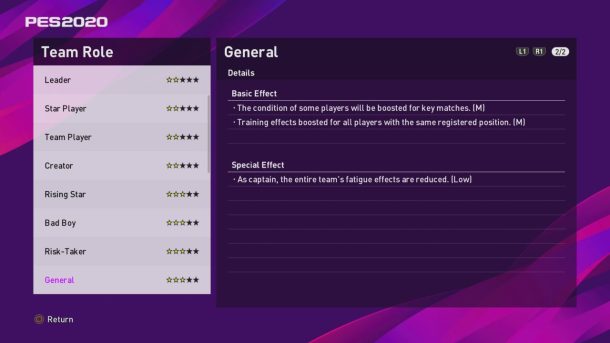
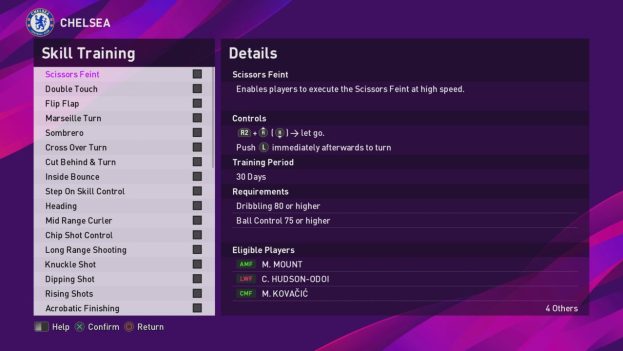
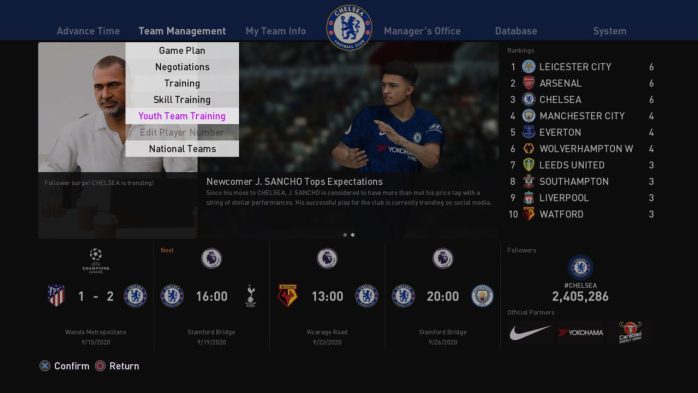
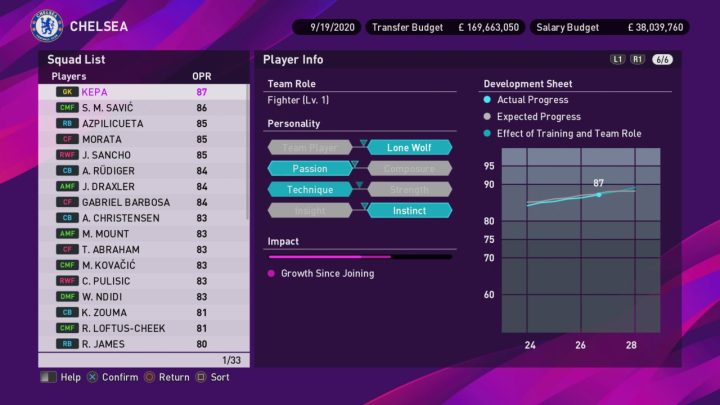




Published: Mar 19, 2020 01:30 pm